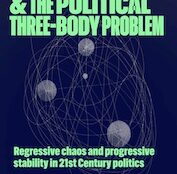World leaders gather in Glasgow next week for the 12-day United Nations Climate Change Conference known as COP26. WILL BROWN explains the background and key issues at what’s been called the most important summit in history.
COP26 is the 26th ‘Conference of the Parties’ of the UN Framework Convention on Climate Change (UNFCCC), first signed in 1992. UNFCCC was the first global commitment to address climate change, and an international agreement of major significance, but it was set up without any legally binding means to achieve its goals.
 The first real step to giving it legal weight came with the Kyoto Protocol signed in 1997 at COP3. The Protocol created binding commitments on industrialised countries to reduce their greenhouse gases in relation to emissions by 1990.
The first real step to giving it legal weight came with the Kyoto Protocol signed in 1997 at COP3. The Protocol created binding commitments on industrialised countries to reduce their greenhouse gases in relation to emissions by 1990.
But it was a flawed agreement. The Protocol omitted any binding emissions targets for large developing countries, such as China and India and, partly as a result, the US under George W Bush withdrew from the Protocol in 2001. Subsequent negotiations to expand and renew the Protocol were characterised by deep divisions, exemplified by the stand-off between China and USA at the Copenhagen summit (COP15) in 2009.
The Paris Agreement, signed in 2015 at COP21, introduced a new method for accelerating global efforts to reduce emissions. The Kyoto Protocol took a ‘cap and trade’ approach to emissions reductions – countries that committed to specific levels of greenhouse gas emissions could trade emissions permits to reach those levels.
The Paris Agreement is more of a ‘best efforts’ approach whereby countries set out the measures they will take to contribute to an agreed outcome. To some extent they are then held accountable for their efforts.
The Paris Agreement set an overall target to limit global heating to “well below 2oC and preferably 1.5oC” above pre-industrial levels. Crucially, it expects all countries to contribute to this aim.
It also established a five-year cycle meaning countries have a legal obligation to announce their ‘nationally determined commitments’ (NDCs) every five years. The first announcement was scheduled for 2020 but delayed a year due to the pandemic. COP26 is when these commitments will finally be made.
Countries will then be required to report on their progress towards meeting their NDCs, and to making new and more far-reaching commitments every five years. They also have to set out ‘long-term low greenhouse gas emission development strategies’ (LT-LEDS) within which their five-year commitments will sit. The world of climate politics is not short of clumsy acronyms.
Developing countries
Alongside the NDCs, the Paris Agreement also contained measures to fund emissions reductions in developing countries, and pledges to help less developed nations adapt to the effects of climate change, and to develop and share technology to improve climate change resilience – all moves regarded as crucial by developing countries and essential to their participation in the treaty.
The key questions of COP26 therefore will be:
- How ambitious are the NDCs of major emitting countries and collectively will they meet the 1.5oC target? The early signs aren’t good: the United Nations has warned that existing commitments will see temperatures rise by a dangerous 2.7oC.
- Will developed countries meet the aim of providing US$100 billion per year in climate finance to assist mitigation and adaptation? They are currently estimated to be around US$20bn short of this target (although estimates vary).
- Will other rules be agreed? Sometimes referred to as ‘the Paris rule book’, these cover a complex array of issues from carbon markets, to compensation for losses due to climate change, to the role of ‘nature-based solutions’ (NbS) such as restoring forests or changing agricultural practices.
Domestic politics place a major constraint on whether such international ambitions can be realised. Nowhere is this more apparent than in the two giants of climate change – China and the United States.
Although Joe Biden’s presidency raised hopes of significant progress by the US, the ongoing congressional impasse over his climate and infrastructure finance bills, and the ongoing power of the fossil fuel lobby, limit what he can bring to COP26.
China’s commitments have wavered in recent years too, with President Xi unwilling to imperil his own domestic standing to help save the planet. China’s faltering growth, and efforts to solve energy supply problems by increasing coal-fired power supplies, also restrict what is achievable in Glasgow.
—-


